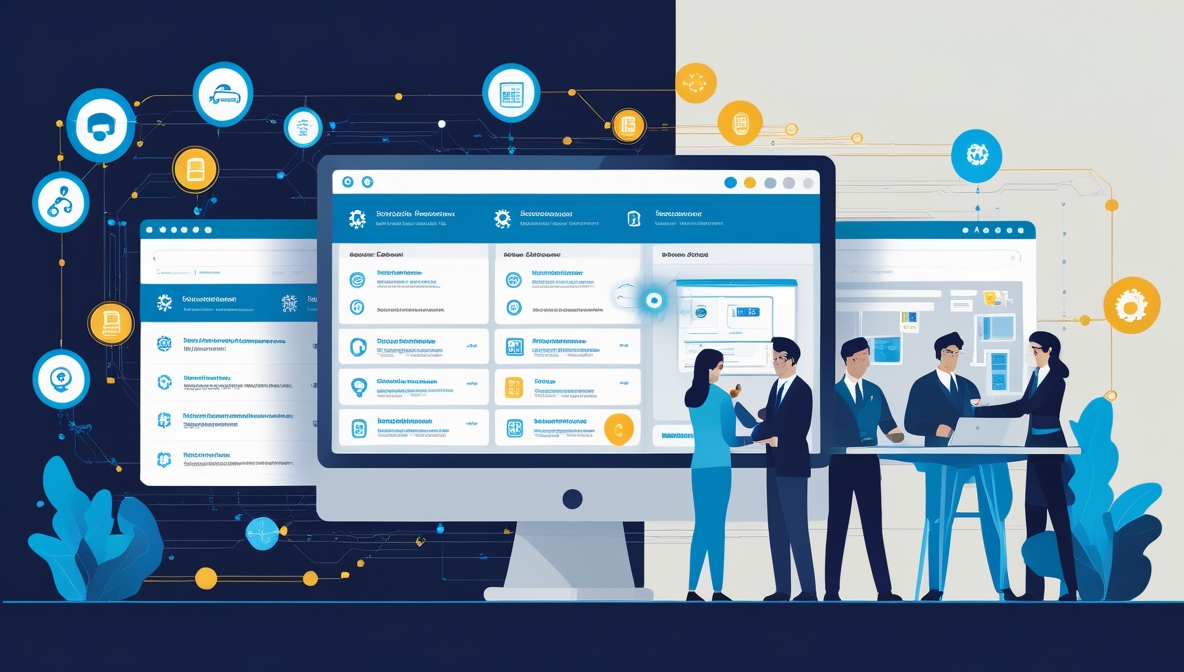This example explores a comprehensive ITIL implementation in a higher education institution, demonstrating key strategies and outcomes in enhancing IT service management. It covers the strategic alignment of IT services with organizational goals, showcasing improvements in incident and change management and the overall enhancement of service delivery.
This real-world ITIL example delves into the application of ITIL practices within a higher education institution, focusing on how the ITIL framework has been leveraged to streamline IT service management. The example provides a practical perspective on improving operational effectiveness and aligning IT services with educational objectives.
In higher education, IT systems play a pivotal role in supporting administrative functions and academic activities. The need for robust IT service management becomes critical with the increasing reliance on digital platforms for teaching, learning, and administrative operations. With its structured approach, ITIL offers the methodology to manage these services systematically.
The institution faced recurring IT-related issues that hindered its ability to deliver consistent and reliable service to students, faculty, and staff. Challenges included delayed response times, unresolved service tickets, and frequent disruptions in critical services, which collectively affected overall productivity and user satisfaction.
These ongoing disruptions led to a growing dissatisfaction among stakeholders, impacting the institution's reputation. The disjointed approach to managing IT services meant that as problems arose, they were often treated symptomatically rather than through a strategic, long-term approach, leading to repeated issues and inefficiencies.
Adopting the ITIL framework, the institution implemented structured processes for incident management, change management, and continuous service improvement. This approach not only addressed the root causes of service disruptions but also fostered a proactive culture toward IT service management. Regular reviews and adaptations of IT services ensured they continuously evolved to meet the institution's changing needs.
The successful implementation of ITIL in this higher education setting underscores its effectiveness in enhancing service delivery and operational efficiency. This case study exemplifies how ITIL can transform IT service management in educational institutions, ensuring that IT services align with and support the institution's goals and the diverse needs of its users.
Main Contents
- Overview of ITIL principles and their relevance to higher education.
- Analysis of the initial IT challenges faced by the educational institution.
- Examination of the impact of these challenges on stakeholders.
- Description of the ITIL implementation process, including strategic initiatives.
- Assessment of the outcomes following the adoption of the ITIL framework.
Key Takeaways
- ITIL provides a robust framework that is highly applicable and beneficial in a higher education context. It aids in systematic IT service management.
- Effective IT service management is crucial for educational institutions' smooth operation and reputation, which in turn impacts student and staff satisfaction.
- Addressing IT issues through a structured framework like ITIL resolves immediate problems and helps prevent future disruptions.
- Regular evaluation and adaptation of IT services are essential for keeping pace with the evolving needs of an educational institution’s stakeholders.
- Adopting ITIL can significantly improve operational efficiency, service quality, and alignment of IT services with institutional goals, enhancing stakeholder satisfaction and institutional success.
This real-world example of ITIL application in a higher education institution is a valuable resource for CIOs and IT leaders aiming to tackle the complexities of managing and improving IT service management within their organizations. By learning from this example, CIOs can:
Understand the Importance of Structured IT Service Management: This example illuminates the significant benefits of implementing the ITIL framework to manage IT services systematically. CIOs can see how ITIL aligns IT operations with the organization's broader goals, ensuring that IT services support and advance these goals.
Develop a Comprehensive Approach to IT Challenges: The detailed account of identifying and addressing IT service management challenges provides CIOs with a blueprint for diagnosing and resolving similar issues within their organizations. This comprehensive approach helps modernize IT service operations and ensure they meet the organization's current and future needs.
Implement ITIL Effectively: The example provides practical strategies for the successful implementation of ITIL, from initial assessment and planning through to execution and ongoing improvement. These strategies enable CIOs to structure their IT services more effectively, allowing for quick adaptation to changes in technology and business requirements.
Enhance Organizational Efficiency and Service Quality: By adopting the ITIL practices outlined in the example, CIOs can enhance the efficiency and quality of IT services. Improved service management leads to reduced downtime, faster resolution of issues, and better allocation of IT resources, all of which contribute to higher overall service quality.
Leverage Real-World Insights for Strategic Decisions: Including practical outcomes and benefits experienced by the institution provides CIOs with concrete examples of how ITIL can positively impact service management. These insights are valuable for making informed strategic decisions about IT service management in their organizations.
Drive Business Value Through Effective IT Governance: This example demonstrates how effective IT governance using the ITIL framework can help align IT initiatives with business objectives, ensuring that IT operations contribute directly to the business's success. CIOs can use these insights to enhance the strategic value delivered by their IT departments.
By examining this real-world example of ITIL implementation, CIOs and IT leaders can gain actionable insights and proven strategies to apply in their contexts. The example shows the benefits of structured IT service management and highlights the role of effective IT governance in achieving organizational success. This is an essential tool for CIOs looking to optimize their organization’s IT framework and align it more closely with business objectives, thereby playing a crucial role in the organization's overall success and competitiveness.

